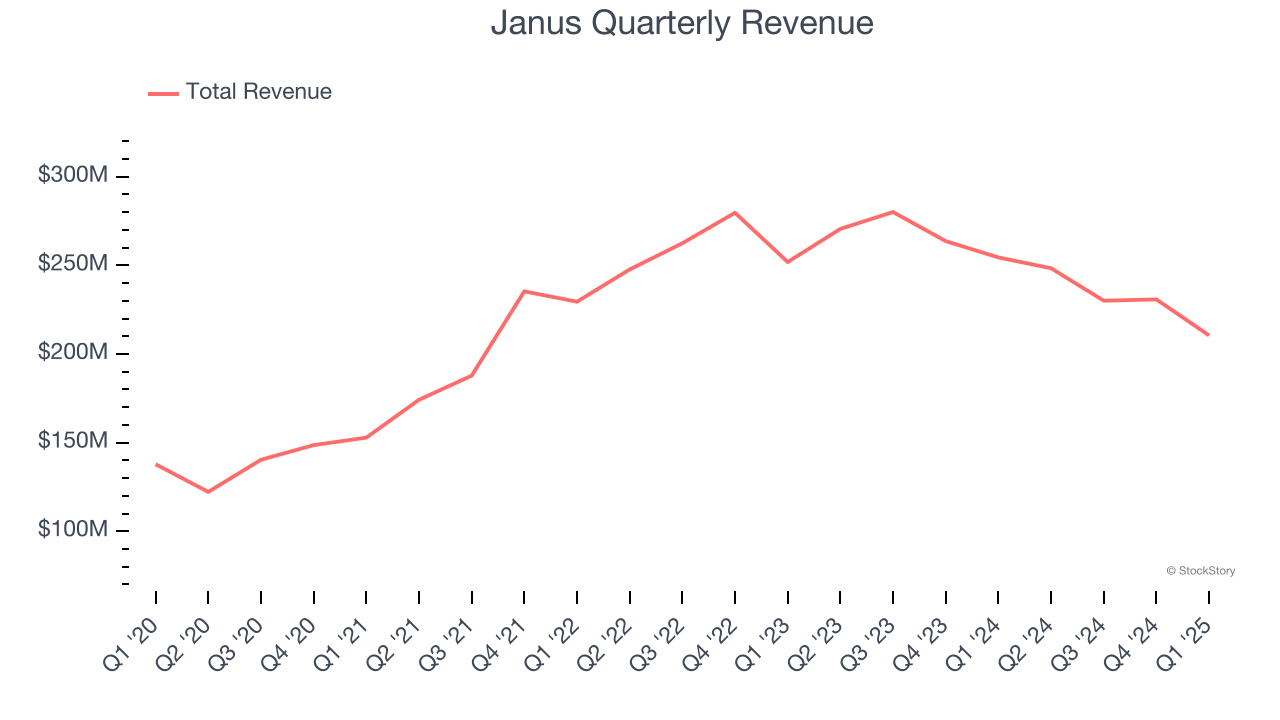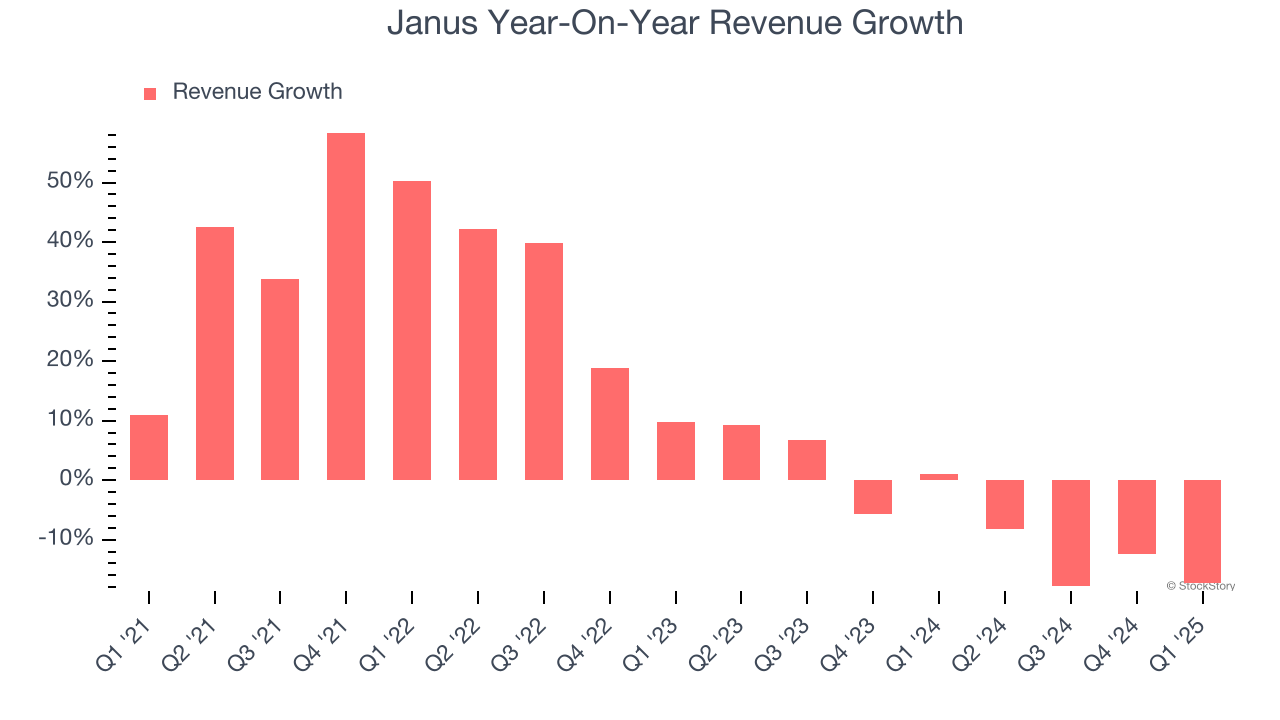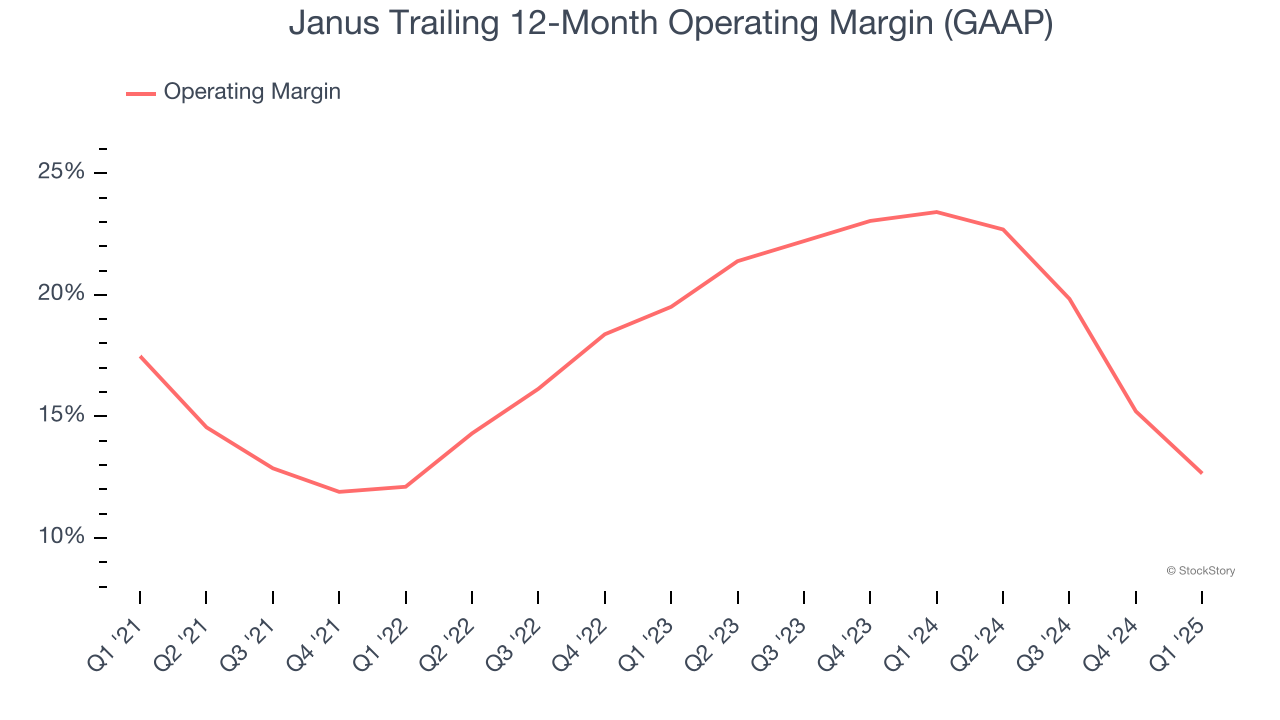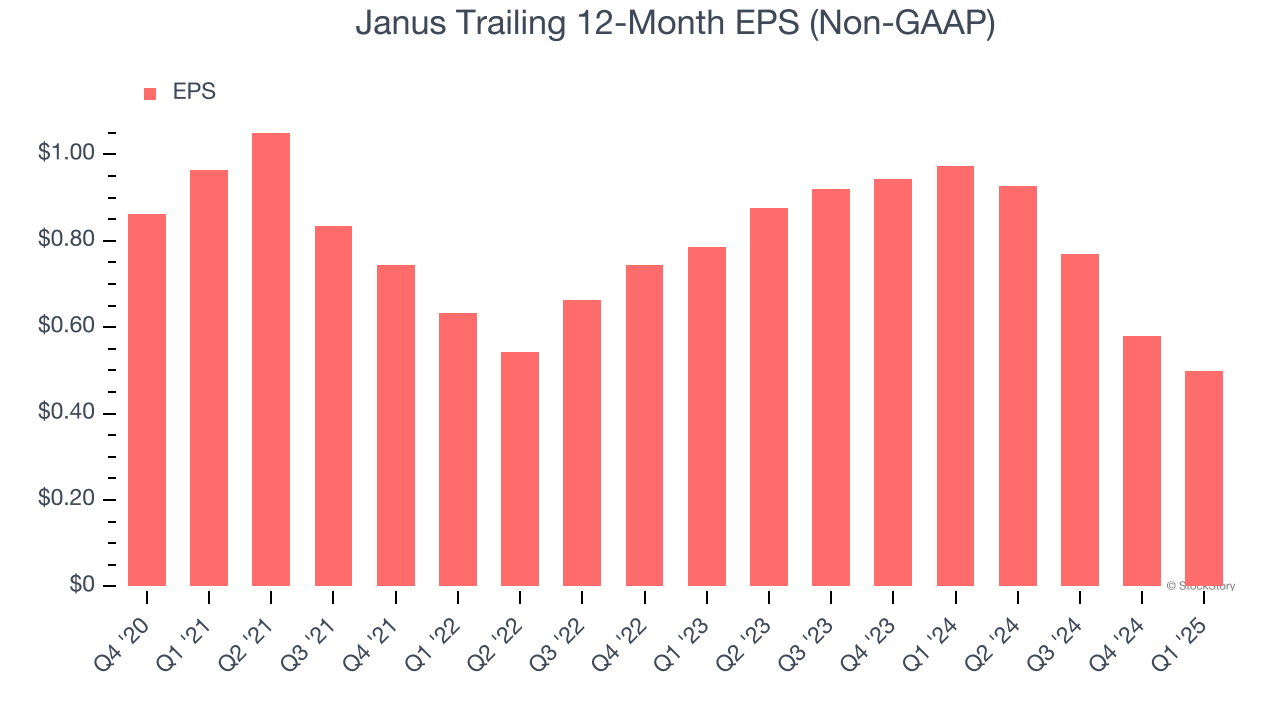
Self-storage and building solutions company Janus (NYSE: JBI) reported revenue ahead of Wall Street’s expectations in Q1 CY2025, but sales fell by 17.3% year on year to $210.5 million. The company expects the full year’s revenue to be around $875 million, close to analysts’ estimates. Its non-GAAP profit of $0.13 per share was 79.3% above analysts’ consensus estimates.
Is now the time to buy Janus? Find out by accessing our full research report, it’s free.
Janus (JBI) Q1 CY2025 Highlights:
- Revenue: $210.5 million vs analyst estimates of $206.4 million (17.3% year-on-year decline, 2% beat)
- Adjusted EPS: $0.13 vs analyst estimates of $0.07 (79.3% beat)
- Adjusted EBITDA: $38.4 million vs analyst estimates of $37.18 million (18.2% margin, 3.3% beat)
- The company reconfirmed its revenue guidance for the full year of $875 million at the midpoint
- EBITDA guidance for the full year is $185 million at the midpoint, above analyst estimates of $182.6 million
- Operating Margin: 12%, down from 21.8% in the same quarter last year
- Free Cash Flow Margin: 19.9%, down from 69% in the same quarter last year
- Market Capitalization: $1.00 billion
“We delivered first quarter results that were largely in-line with our expectations,” said Ramey Jackson, Chief Executive Officer.
Company Overview
Standing out with its digital keyless entry into self-storage room technology, Janus (NYSE: JBI) is a provider of easily accessible self-storage solutions.
Sales Growth
A company’s long-term sales performance is one signal of its overall quality. Any business can put up a good quarter or two, but the best consistently grow over the long haul. Thankfully, Janus’s 13% annualized revenue growth over the last four years was excellent. Its growth beat the average industrials company and shows its offerings resonate with customers.

We at StockStory place the most emphasis on long-term growth, but within industrials, a stretched historical view may miss cycles, industry trends, or a company capitalizing on catalysts such as a new contract win or a successful product line. Janus’s recent performance marks a sharp pivot from its four-year trend as its revenue has shown annualized declines of 6% over the last two years. 
This quarter, Janus’s revenue fell by 17.3% year on year to $210.5 million but beat Wall Street’s estimates by 2%.
Looking ahead, sell-side analysts expect revenue to decline by 4.7% over the next 12 months, similar to its two-year rate. While this projection is better than its two-year trend, it's tough to feel optimistic about a company facing demand difficulties.
Unless you’ve been living under a rock, it should be obvious by now that generative AI is going to have a huge impact on how large corporations do business. While Nvidia and AMD are trading close to all-time highs, we prefer a lesser-known (but still profitable) stock benefiting from the rise of AI. Click here to access our free report one of our favorites growth stories.
Operating Margin
Janus has been a well-oiled machine over the last five years. It demonstrated elite profitability for an industrials business, boasting an average operating margin of 17.4%. This result isn’t surprising as its high gross margin gives it a favorable starting point.
Looking at the trend in its profitability, Janus’s operating margin decreased by 4.8 percentage points over the last five years. This raises questions about the company’s expense base because its revenue growth should have given it leverage on its fixed costs, resulting in better economies of scale and profitability.

This quarter, Janus generated an operating profit margin of 12%, down 9.8 percentage points year on year. Since Janus’s operating margin decreased more than its gross margin, we can assume it was less efficient because expenses such as marketing, R&D, and administrative overhead increased.
Earnings Per Share
We track the long-term change in earnings per share (EPS) for the same reason as long-term revenue growth. Compared to revenue, however, EPS highlights whether a company’s growth is profitable.
Sadly for Janus, its EPS declined by 15.2% annually over the last four years while its revenue grew by 13%. This tells us the company became less profitable on a per-share basis as it expanded.

Like with revenue, we analyze EPS over a shorter period to see if we are missing a change in the business.
For Janus, its two-year annual EPS declines of 20.3% show it’s continued to underperform. These results were bad no matter how you slice the data.
In Q1, Janus reported EPS at $0.13, down from $0.21 in the same quarter last year. Despite falling year on year, this print easily cleared analysts’ estimates. We also like to analyze expected EPS growth based on Wall Street analysts’ consensus projections, but there is insufficient data.
Key Takeaways from Janus’s Q1 Results
We were impressed by how significantly Janus blew past analysts’ revenue, EPS, and EBITDA expectations this quarter. We were also glad its full-year EBITDA guidance topped Wall Street’s estimates. Overall, we think this was a solid quarter with some key areas of upside. The stock traded up 12% to $8.01 immediately following the results.
Sure, Janus had a solid quarter, but if we look at the bigger picture, is this stock a buy? If you’re making that decision, you should consider the bigger picture of valuation, business qualities, as well as the latest earnings. We cover that in our actionable full research report which you can read here, it’s free.







